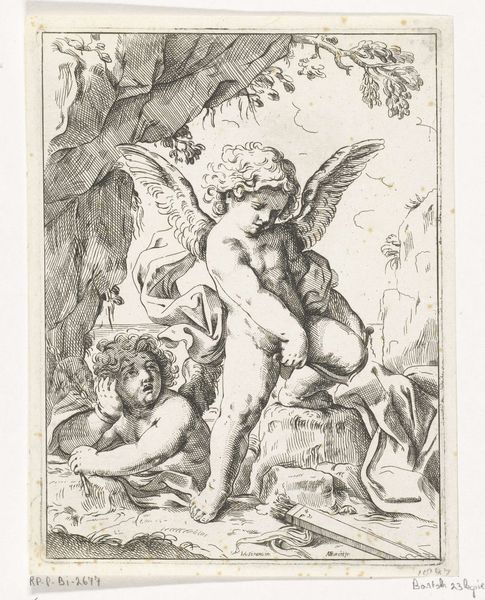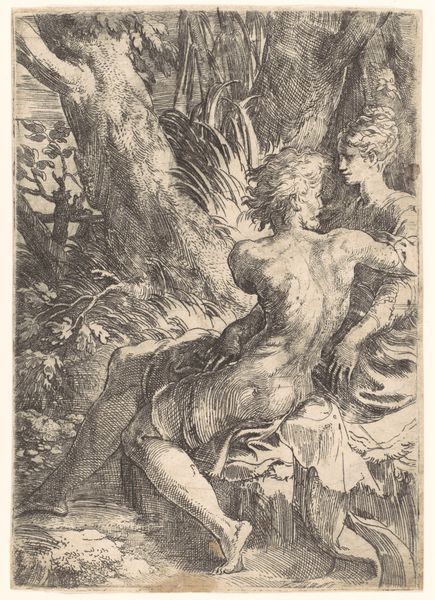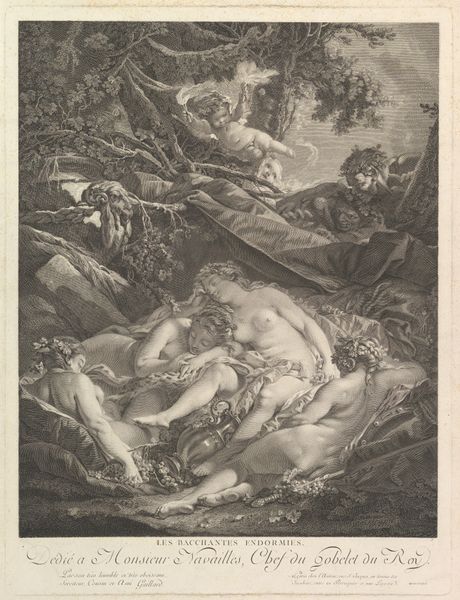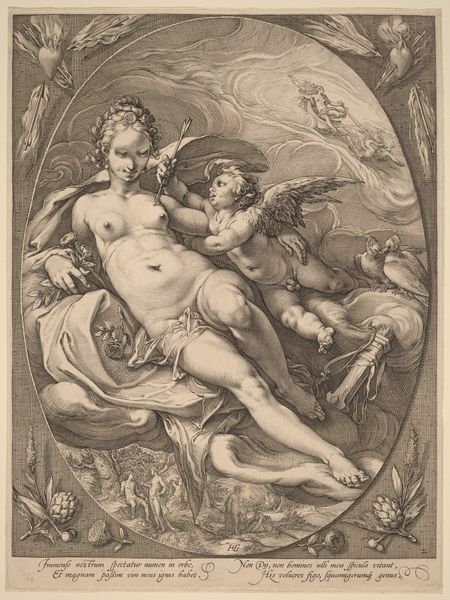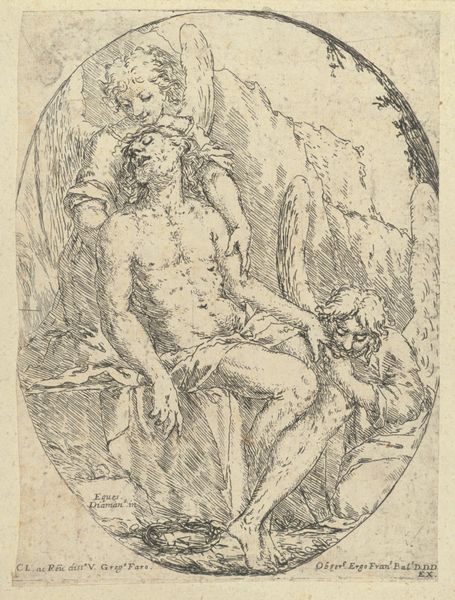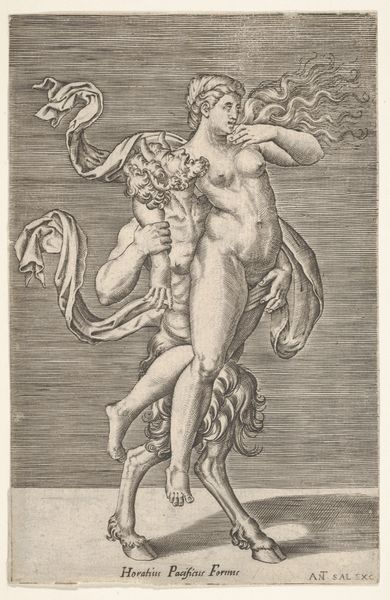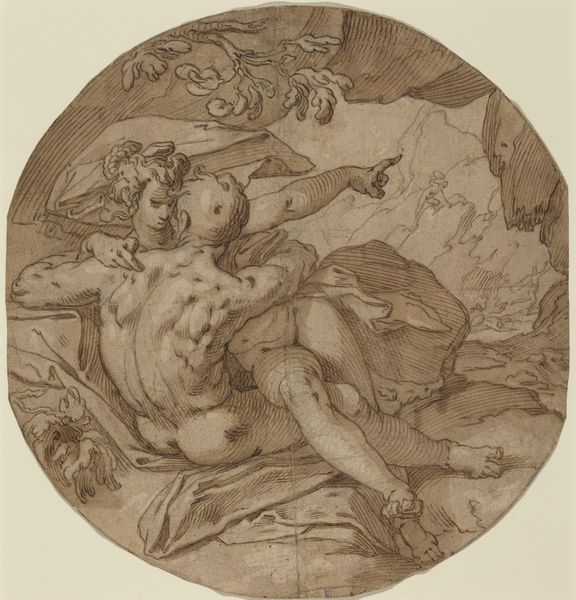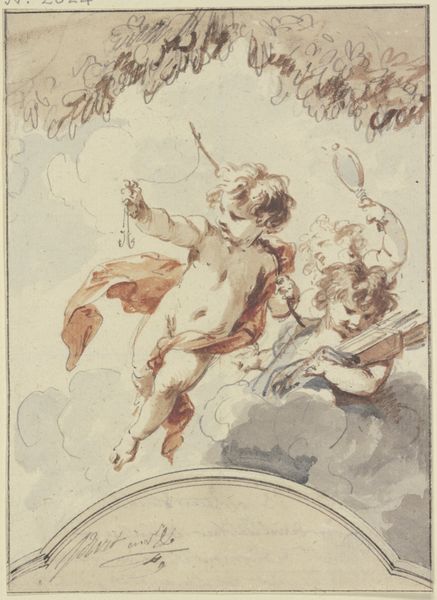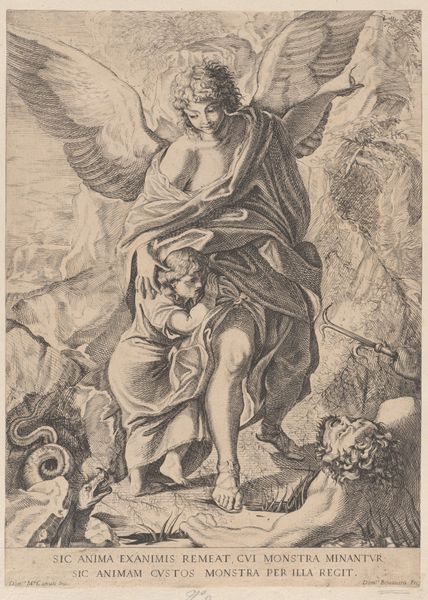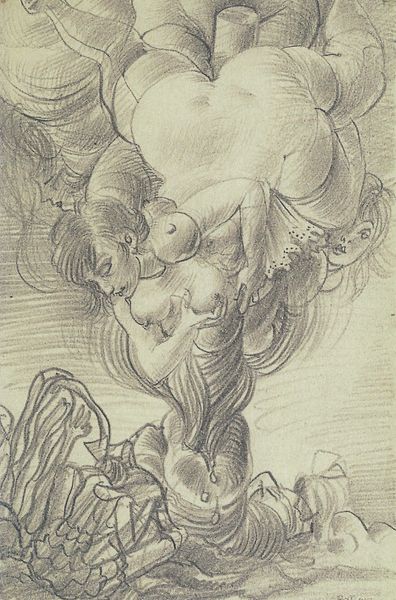
drawing, print, etching
#
drawing
# print
#
etching
#
figuration
#
child
#
pencil drawing
#
genre-painting
#
rococo
Dimensions: Sheet (trimmed): 9 3/16 × 7 1/16 in. (23.4 × 18 cm)
Copyright: Public Domain
Curator: This etching by Louis Marin Bonnet, made sometime between 1755 and 1765 and titled "The Crying Child," it's hard to look away. Editor: Absolutely. There's a vulnerability that's arresting. Looking closely, I see that the intaglio ink has aged giving the piece an overall faded, rosy tone which softens it. Can you share your insight into this print? Curator: Well, I am immediately drawn to the process and context of the etching. Bonnet, a master of color printmaking, pushes the boundaries between drawing and printmaking. I am keen to understand how such an image would function, and circulate in eighteenth-century France. Was it bought and sold on the market, to be collected? What does it mean when we can consume these readily accessible artworks, considering the rise of the bourgeoisie and its evolving relationship with art and decor? Editor: I hadn't considered the role of the market. So, you see the etching process itself and its potential consumption as central to understanding the work? Curator: Precisely. The choice of etching allows for the creation of multiple impressions. This is about more than just a sentimental image of a crying child. It’s about the democratization of art, facilitated by these specific modes of production and distribution and its new function of decor for the home, but more so I am questioning, how many 'Crying Child' images did Bonnet produce in his studio. And who helped in the studio? What was their compensation and level of expertise? Editor: Fascinating. Focusing on the means of production really changes how I see the image. It becomes a commentary on a changing art world. Curator: Indeed! By examining the materials and the methods, we begin to unpack the complex relationship between art, labor, and society. Editor: Thanks for that enlightening take on the material conditions. I was stuck on just interpreting the sad child! Curator: Understanding art in this way, moves our attention to broader implications beyond conventional aesthetics, as art creation exists within economic and social networks.
Comments
No comments
Be the first to comment and join the conversation on the ultimate creative platform.


